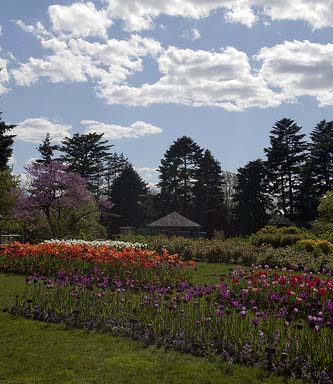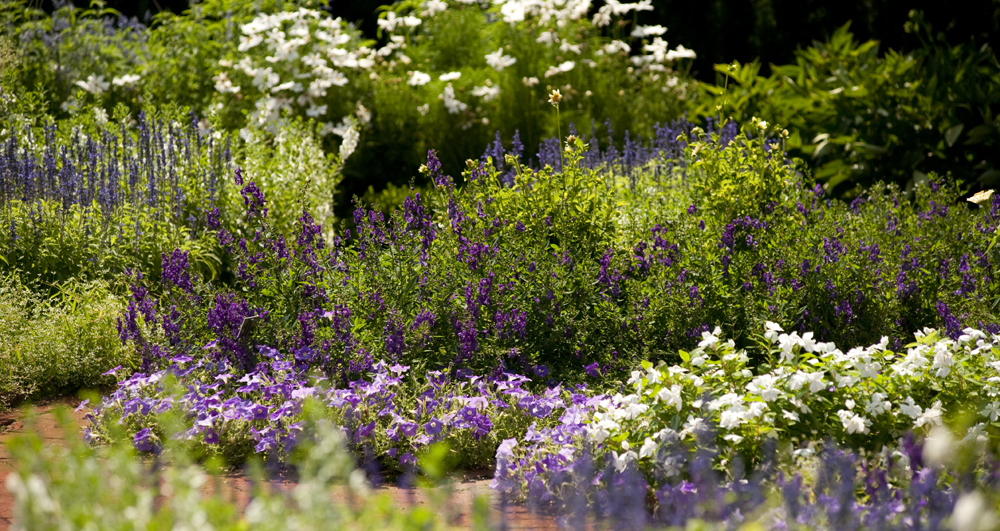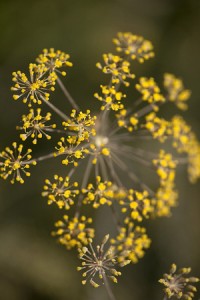Season in Review
Posted in Around the Garden, Gardening Tips on November 29 2011, by Sonia Uyterhoeven
 The season is winding down, meaning it’s a good time to reflect and take stock of what was grown in the garden this year. If I don’t keep my records and notes, the observations that seem cemented in my mind will have evaporated into a fuzzy haze of vague recollections in no time. As such, I will begin some initial record keeping here.
The season is winding down, meaning it’s a good time to reflect and take stock of what was grown in the garden this year. If I don’t keep my records and notes, the observations that seem cemented in my mind will have evaporated into a fuzzy haze of vague recollections in no time. As such, I will begin some initial record keeping here.
At our side entrance gate we planted a trio of coleus (Solenostemon) cultivars. We selected ‘Green Card,’ ‘Saturn,’ and ‘Brooklyn Horror’ for variety. The first two are large-leaved specimens, while the latter has very fine, feathery foliage. In terms of color, ‘Green Card’ is a bright citrine green while the other two are a luxurious combination of the same iridescent green and a rich burgundy.
After planting, they mingled together beautifully in terms of their colors and leaf shape. However, it soon became apparent that ‘Green Card’ and ‘Saturn’ were more vigorous. The feathery foliage of ‘Brooklyn Horror’ began to falter before being engulfed by the other two varieties.
We also planted ‘Brooklyn Horror’ at a shady site in the Everett Children’s Adventure Garden, mixed with New Guinea impatiens. Here it thrived without the intense competition of other coleus varieties, and seemed to prefer the shadier location.
For those of you interested in growing ‘Green Card,’ it displays a bright, apple green color in the shade, but it becomes bleached out in the sun and often takes on a yellowish cast. This isn’t necessarily a bad thing; it’s simply a fact of life with many of the pale coleus cultivars.

But coleus aside, we also had a beautiful annual planting in the Home Gardening Center, where the assortment of annuals combined together as if they were made for each other. ‘Diamond Frost®’ euphorbia (Euphorbia hypericifolia) has been around for several years and is a winning annual reminiscent of baby’s breath, with its fine white spray of tiny flowers and larger white bracts. This year we partnered it with a pale, double-flowering pink impatiens named ‘Fiesta Appleblossom™’ (Impatiens walleriana); a compact-growing flossflower of a pale purple hue (Ageratum houstonianum ‘Patina Delft™’); and the obligatory summer snapdragon (Angelonia ‘Angelface Dresden Blue®’) to provide a vertical accent.
Each annual spilled neatly over into the next and the color scheme became a pastel, purple, and pink with blue overtones. ‘Fiesta Appleblossom’ in particular attracted a great deal of attention from visitors; its ornate double flowers looked like small rose blossoms. But ‘Patina Delft’ is certainly at the top of my personal list of new discoveries. The bluish-purple flowers have a white cast to them that makes the plant appear almost silky in texture. Its compact size is also ideal for combining with other annuals.

Another pair that I enjoyed in the Home Gardening Center was the Mexican cigar plant (Cuphea micropetala) and the tobacco flower (Nicotiana x sanderae ‘Baby Bella’). We grew the Mexican cigar plant by the border of a path, where it arched over to soften the edge, rising to an impressive three feet tall and approximately two feet wide. The flowers–predictably cigar-shaped and struck through with golds and reds–extend 12 inches down the stem and bloom from early summer and into the fall. This hummingbird magnet makes an ideal middle-of-the-border accent plant in your perennial borders.
‘Baby Bella’ is a compact-flowering tobacco that grows to around two feet tall, and has a branching structure that produces a specimen smothered with tubular, wine-red flowers. The burgundy blooms create a striking contrast alongside the plant’s vibrant green foliage. Further, it possesses great flowering stamina, blooming from early summer and well into the fall. Here at the Garden, we have it partnered with the feathery foliage of bronze fennel (Foeniculum vulgare) and the broad, fuzzy leaves of Berggarten sage (Salvia officinalis).
For the past several years we have also had a trial bed of lantana. My favorites this year were Lantana camara ‘Lucky Sunrise Rose’ and Lantana camara ‘Radiation.’ ‘Lucky Sunrise Rose’ grew 16 inches tall and had a blossom that blended pink, apricot, and yellow, while ‘Radiation’ grew slightly taller and showed fiery blossoms of red, orange, and bright yellow. Each of these varieties filled out beautifully, and was smothered with flowers all season long.
Our successes were clearly mixed, but in the end we cultivated a lovely stock this year at the NYBG. What were some of your favorite annuals of 2011?

